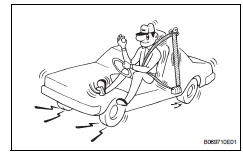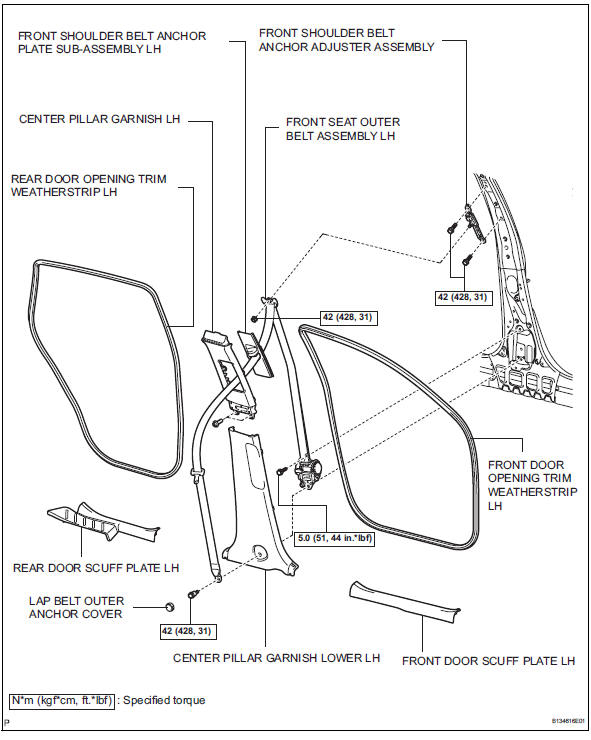Toyota RAV4 (XA40) 2013-2018 Service Manual: Precaution

Caution:
Replace the faulty parts of the seat belt systems (outer belt, inner belt, bolts, nuts, adjustable shoulder anchor, tether anchor hardware and other related parts). When inspecting a vehicle that was in a collision, be sure to check all of the seat belt systems regardless of whether or not the system was activated in the collision. Replace any damaged or malfunctioning systems.
- Running test (in safe area)
Caution:
Conduct this test in a safe area.
- Fasten the front seat belt.
- Drive the vehicle at 16 km/h (10 mph) and firmly
depress the brakes. Check that the belts lock and
cannot be extended at this time.
If a belt does not lock, replace the seat belt assembly (see page sb-27).
Hint:
Inspect a seat belt assembly before installing it (see page sb-29).
Components

 Removal
Removal
Hint:
Use the same procedures for the lh side and rh side.
The procedures listed below are for the lh side.
Disconnect cable from negative battery
terminal
Caution:
Wait at least 90 ...
Other materials:
Symptom simulation
Hint:
The most difficult case in troubleshooting is when no
problem symptoms occur. In such a case, a thorough
problem analysis must be carried out. A simulation of the
same or similar conditions and environment in which the
problem occurred in the customer's vehicle should be
carried out. No ...
Head restraints
Head restraints are provided
for all seats.
WARNING
â– Head restraint precautions
Observe the following precautions
regarding the head restraints.
Failure to do so may result in
death or serious injury.
Use the head restraints
designed for each respective
seat.
Adjust the head restraints to th ...
Differential case
Components
Disassembly
Remove front differential ring gear
Place the matchmarks on the ring gear and
differential case.
Remove the 14 bolts.
Using a plastic-faced hammer, tap on the ring gear
to remove it from the case.
Remove front differential case ...

